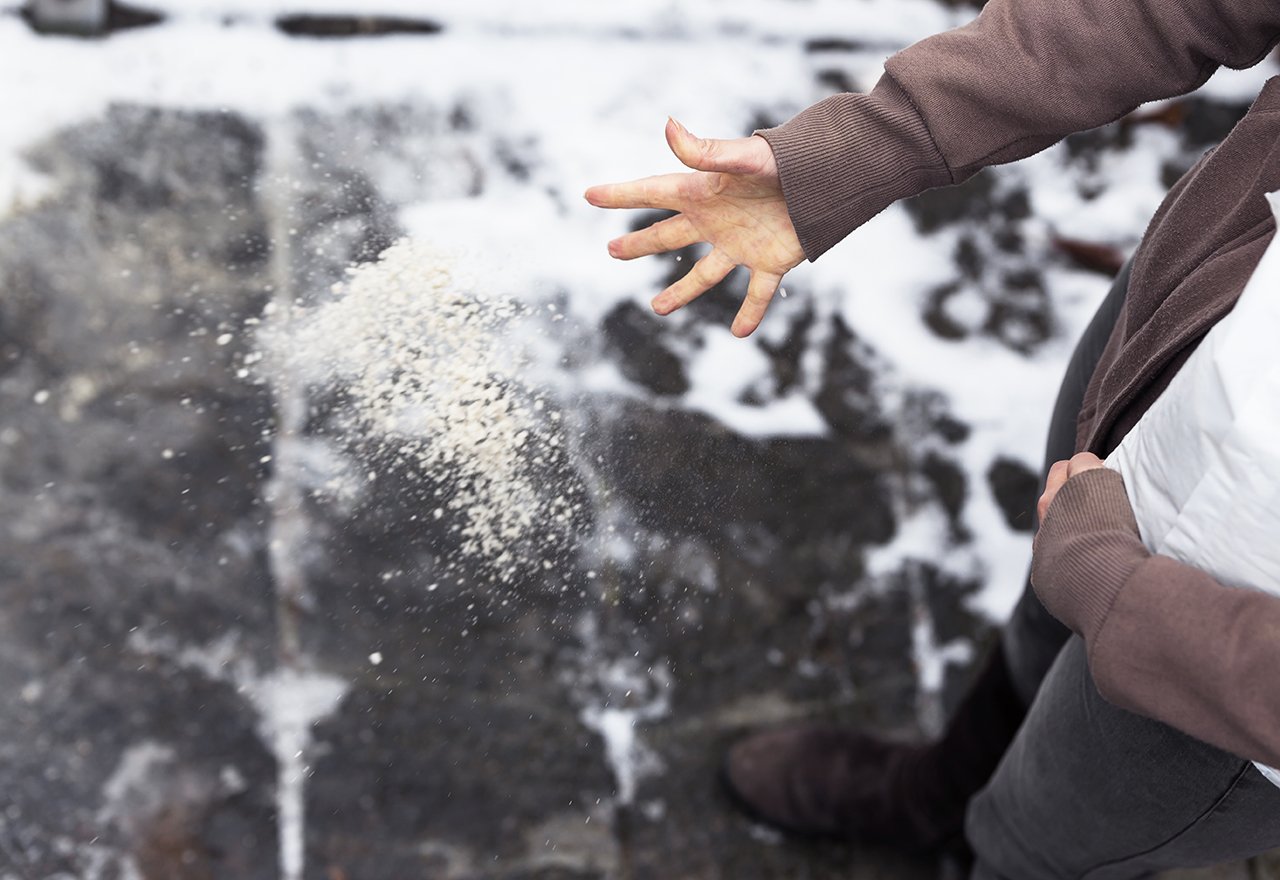Safe Salting This Winter
by Kirsten Johnson, on January 8, 2024

The icy cold weather is on it's way! It's time to think about how to keep your walkways clear of slippery ice without harming your hardscape, plants, lawn, pets, and family. We have listed a few tips to help this Winter when applying de-icers!
Tips For Safely Melting Ice This Winter
1. Remove Top Layer Of Snow
Using a shovel or snow blower remove the loose snow from your desired treatment area. This will help the salt make direct contact with the ice.
2. Apply Ice Melt Correctly
Spread the ice melt thin and evenly using either a hand sifter or a cup. You don't need a lot of salt to get the desired results. You will need to wear gloves if you decide to toss the ice melt, some products can irritate or burn your hands. If you'd like to learn more about why the amount of de-icer you apply matters, read this article.
3. Protect Your Driveway, Plants, & Lawn
It's important to use ice melt in moderation. Products containing salt, although natural, is not good for your walkways and vegetation in large amounts. Try to keep the products off your lawn and plants. If you are concerned, water them when you get a break from the weather. You can also cover larger shrubs and bushes around the bases with burlap for extra protection.
4. Protect Your Pets
When walking your dog, you won't be familiar with all the different products being used on your walkways. Although some products are pet-friendly, take precautions by wiping your pet's paws when they come into the house. Also, avoid letting your pets drink from puddles, and ensure they don't eat pellets (especially smaller pets).
5. Read The Packaging Before Applying
Don't assume that all ice melt products are the same. Some work better during certain temperatures or when the walkways are dry.
Additional Tips
- Never use an ice melt on concrete that is less than 12 months old because newly poured concrete needs time to cure and settle. Applying an ice melt can weaken the concrete and make it more susceptible to future damage. Opt for sand or gravel to add traction.
- Avoid spreading ice melt around plants or on your lawn. You can try to save plants or grass by soaking the affected area with 1-inch applications of water three to four times in the Spring or replacing the soil in a small bed (according to Margaret Hagen, agricultural field specialist at the University of New Hampshire’s Cooperative Extension).
Eco-Friendly Ice Melt
Most traditional salts are toxic and can damage your yard when applied throughout the Winter months. Good Nature recommends a natural approach to keeping your walkways safe. Magic Salt is a great natural product that is people-friendly, plant-friendly, and pet-friendly. Below is a list of reasons why it's our favorite ice-melt!
- Environmentally-Friendly Ice Melt
- Safe For People, Pets, Plants, & The Planet
- More Effective Than Traditional Rock Salt
- Premium Liquid Coated Crystals For Immediate Melting
- Effective At Temperatures As Low As - 25oF
- Agricultural Enhancer Provides Corrosion Protection
- Long Lasting Performance Reduces Re-Application Frequency

You can watch this video for more Winter tips to help your lawn and plants survive the Winter cold and ice, all while keeping your pets and family safe!













